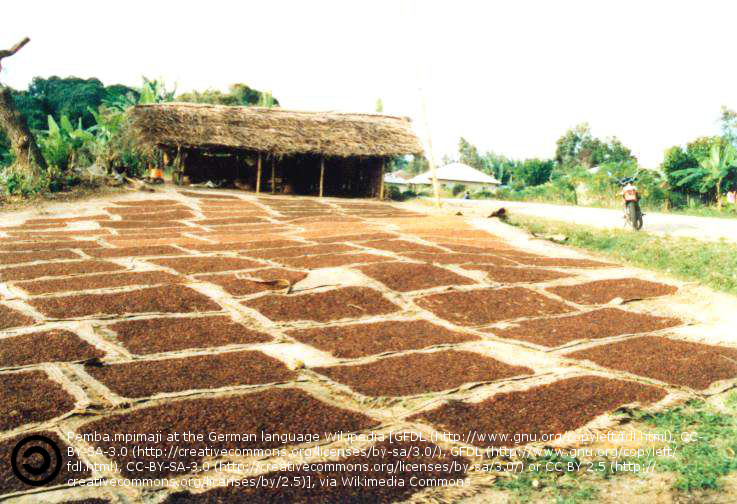 To the microscopist, clove oil used to be one of the best smelling agents when preparing samples for permanent mounting on a glass slide. The corridor soon filled with the wonderful rich smell. However, cloves have a much wider range of uses including traditional use in herbal medicine to ease tooth-ache and to improve digestion. Cloves also make up part of the popular mixture with cinnamon, ginger and nutmeg, of winter spices to flavour cakes, puddings and such like.
To the microscopist, clove oil used to be one of the best smelling agents when preparing samples for permanent mounting on a glass slide. The corridor soon filled with the wonderful rich smell. However, cloves have a much wider range of uses including traditional use in herbal medicine to ease tooth-ache and to improve digestion. Cloves also make up part of the popular mixture with cinnamon, ginger and nutmeg, of winter spices to flavour cakes, puddings and such like.
Cloves are an unusual spice because they are dried flower buds while most spices are either fruit/seeds (nutmeg, star anise etc.) or vegetative parts such as stems (ginger, turmeric, cinnamon) and leaves (kaffir lime).
Syzygium aromaticum, the clove, is a member Myrtaceae, a family full of aromatic species from the common myrtle (Myrtus communis) to the largest broad-leaved trees in the world, Eucalyptus. It is native to Indonesia but is now cultivated in many parts of the tropics and has been in use, particularly in India and China for some 2000 years. Flower buds are harvested and air-dried in great masses before storage. The major scented element of cloves is the chemical eugenol (named for the genus Eugenia, another generic name for the clove plant).
An orange can be decorated with cloves to make a scented pomander, a modern version of the original 13th century pomanders which were scented with ambergris, musk or civet.

@HerbariumDonna has made this beautiful pomander. Can you produce a better one? Tweet an image of your home made #Pomander to @RNGherb to let us know.
You can read more about the name Syzygium at Scientist Sees Squirrel.
Reference
Purseglove, J.W. 1968. Tropical Crops: Dicotyledons. Longman, England.



Pingback: Daughter of #adventbotany 2016 | Dr M Goes Wild
Pingback: #AdventBotany 2018, Day 3: The Pomander – a smorgasbord of Lamiaceae and Rutaceae with a pinch of Sperm Whale Poo | Culham Research Group